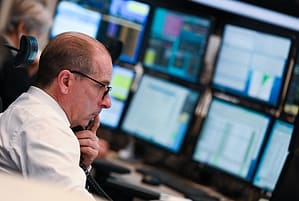With inflation continuing to rise, Maxim Manturov, Head of Investment Advice at Freedom Finance Europe, gives different investment ideas which seek to preserve asset value.
When looking at the stock market, inflation is a daunting hurdle to overcome. As consumer spending falls, so do share prices. However, there are some areas of the market that inflation is less likely to affect.
During times of economic instability, investors can benefit significantly from exploring investments that diversify their portfolios and should consider investments which are performing well despite rising prices and choose instruments that will generate returns that exceed or maintain the current level of inflation. For example, ETFs, commodities, energy stocks, and the gold market are all currently safer areas of investment.
Investing in assets with returns above inflation is historically one of the best ways consumers can beat inflation. It is imperative that investors remember that stocks have and will always outpace inflation in the long term.
While this is not true for every company, some find rising prices have increased company profits, leading to higher stock prices. Experts usually recommend investing in diversified index funds based on broad market indices rather than holding cash. This allows for diversification in your portfolio while reducing the risk of losses.
For example, inflation in the United States has risen by approximately 36% since 2010. These numbers were not critical for many index investors, as the S&P 500 (an index of the 500 largest public companies in the US) rose 230% over the same period, well ahead of inflation.
Now is the time to consider what investments will keep your money safe.
Commodities as a hedge against inflation
Commodities are a broad term which includes grains, precious metals, electricity, oil, and natural gas. Historically investors rely on commodities during periods of high inflation rather than traditional stocks and bonds which tend to perform better in periods of low inflation.
Commodities have a unique relationship with inflation. They can often be used as an indication of when inflation will rise. As the price of commodities rises, so does the price of the products that the commodity is used to produce. Today, investing in commodities through ETFs such as the Invesco DB Commodity Index Tracking Fund (DBC) can widely diversify investors’ portfolios.
The positive correlation with energy during inflation
Energy companies, especially utilities, can increase their prices to customers in order to offset rising costs. Because energy companies’ asset value and product prices rise with inflation, the sector is a reliable choice for those looking for safe investments.
When looking into the energy sector, an example of an energy fund doing well despite inflation is the Energy Select Sector SPDR Fund (XLE) ETF. This fund tracks the S&P Energy Select Sector Index, which includes selected US energy companies which form part of the S&P 500.
Hedging with gold
Gold is the most common commodity investors run to in times of economic uncertainty. Many people see gold as an alternative currency, especially in countries whose own currency is being devalued.
Gold is a physical asset that, for the most part, retains its value. However, gold does not always protect against rising inflation in the short term; it tends only to support it in the long term. As in any strong portfolio, diversification is critical. If you are considering investing in gold the SPDR Gold Shares ETF (GLD) is worth considering.
Portfolio diversification and long-term strategies
If we use history as a guide, inflation can rise at unexpected moments. Investors should consider this when building their portfolios. It is crucial to be aware that including long-term investment strategies, like inflation hedging strategies, and portfolio diversification are essential to any portfolio.
When implemented correctly, investors can be comforted amid times of economic uncertainty – knowing they already have a blueprint that is orientated for the long term and factors in methods to hedge against inflation.






Leave a Comment